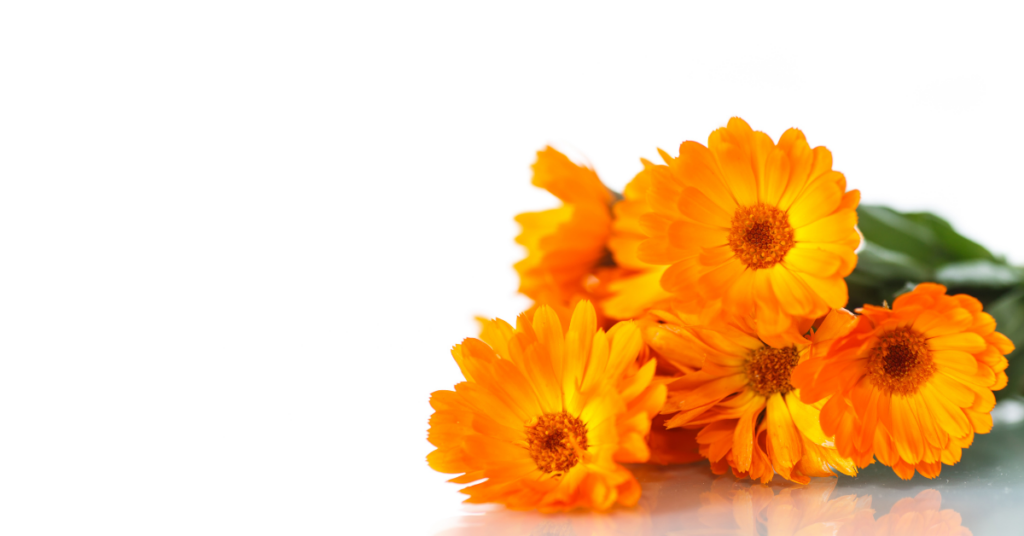Calendula – Homeopathic Remedy
Calendula (Calendula officinalis)
No first-aid kit should be without this wonder plant! It provides symptomatic relief to cuts, stings, boils and wounds, stopping bleeding, and speeding up the healing process.
Calendula flowers at dawn, when the sun begins to rise. It closes at sunset and during cloudy weather. The plant’s name is Latin in origin and refers to its propensity to bloom on the first day, or calends, of every month. Officinalis denotes that it has been used medicinally for many years. Calendula is usually applied externally, but can also be taken in pill form. It has antiseptic and anti-inflammatory properties, and is particularly adept at preventing suppuration (pus formation).
A common British garden plant with bright orange or yellow flowers and light green leaves.
Other names: Marigold, garden marigold, marygold.
Parts used
Leaves and flowers (prepared in tincture form).
Uses
Homeopaths may prescribe this remedy for:
Skin problems such as cuts, wounds, stings, boils and tears (following childbirth).
Throat and mouth conditions such as ulcers, septic sore throat, plus post-tooth extraction oral hygiene (use as a mouthwash / gargle).
Ulcers (stomach, varicose) displaying the following symptoms: Stubborn, chronic ulcers.
People requiring this remedy will feel worse: In damp, draughty conditions, in cloudy weather, after eating.
People requiring this remedy will feel better: When walking, lying motionless.
The information given on this site about homeopathic remedies is just a general overview. Classical homeopathy takes all the patient’s symptoms into account and prescribes upon the “Totality of Symptoms”, thus finding the precise remedy that matches the patient’s symptoms perfectly.
Here, at The CMA we recommend that anyone interested in learning more about homeopathy and the fascinating remedies that homeopaths use should take an introduction course to homeopathy, which will help you to understand how to become a good home first-aid prescriber. This is ideal for ‘acute symptoms’. However, if you want to learn more – with a view even to becoming a professional homeopath, who is educated highly enough to be able to treat chronic conditions, you’ll need to be prepared to spend many years learning this vast and fascinating topic – along with anatomy, physiology and pathology, history of medicine, homeopathic philosophy, and much more. You’ll find both kinds of courses here on this site – head to our section on Find a CMA Member and search under CMA Registered Training Schools.


